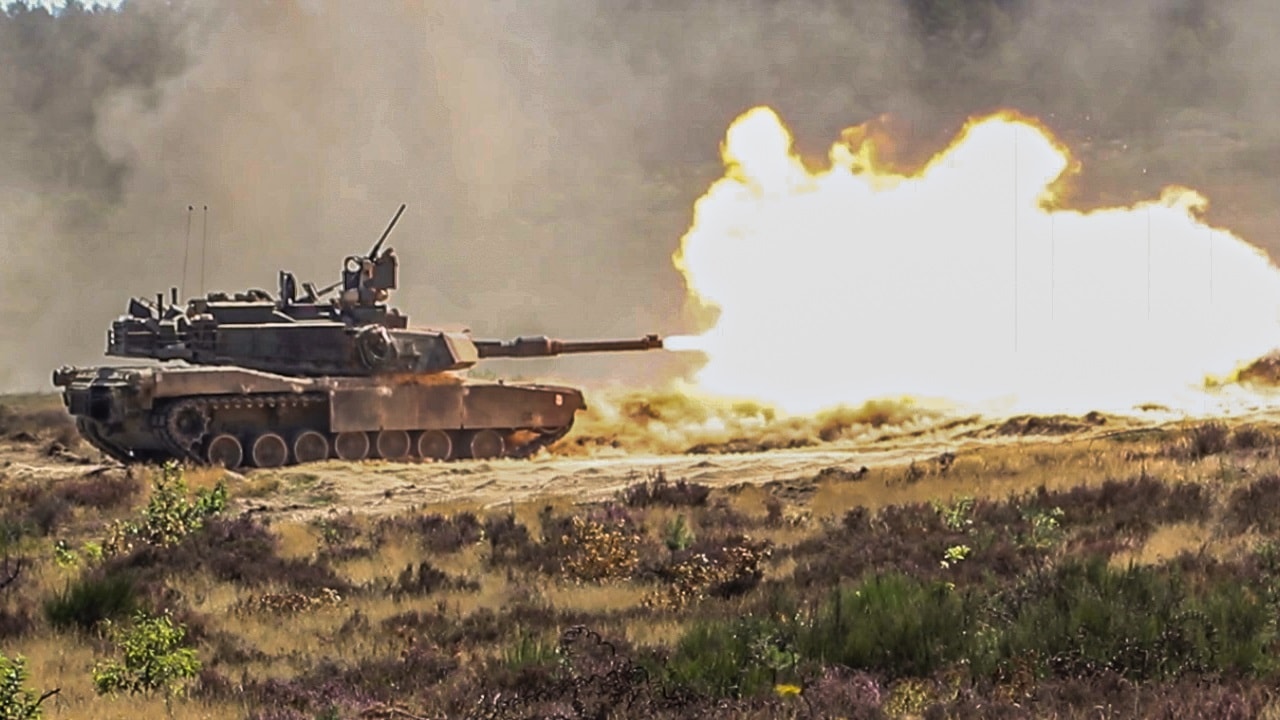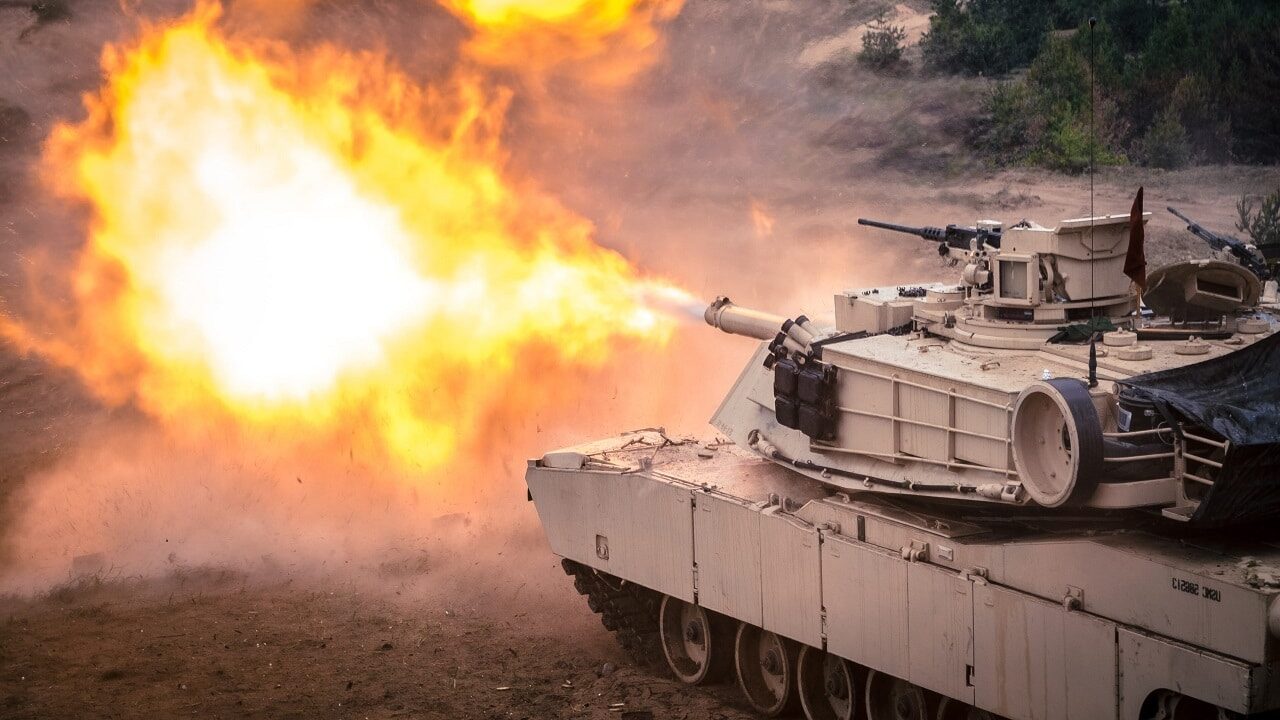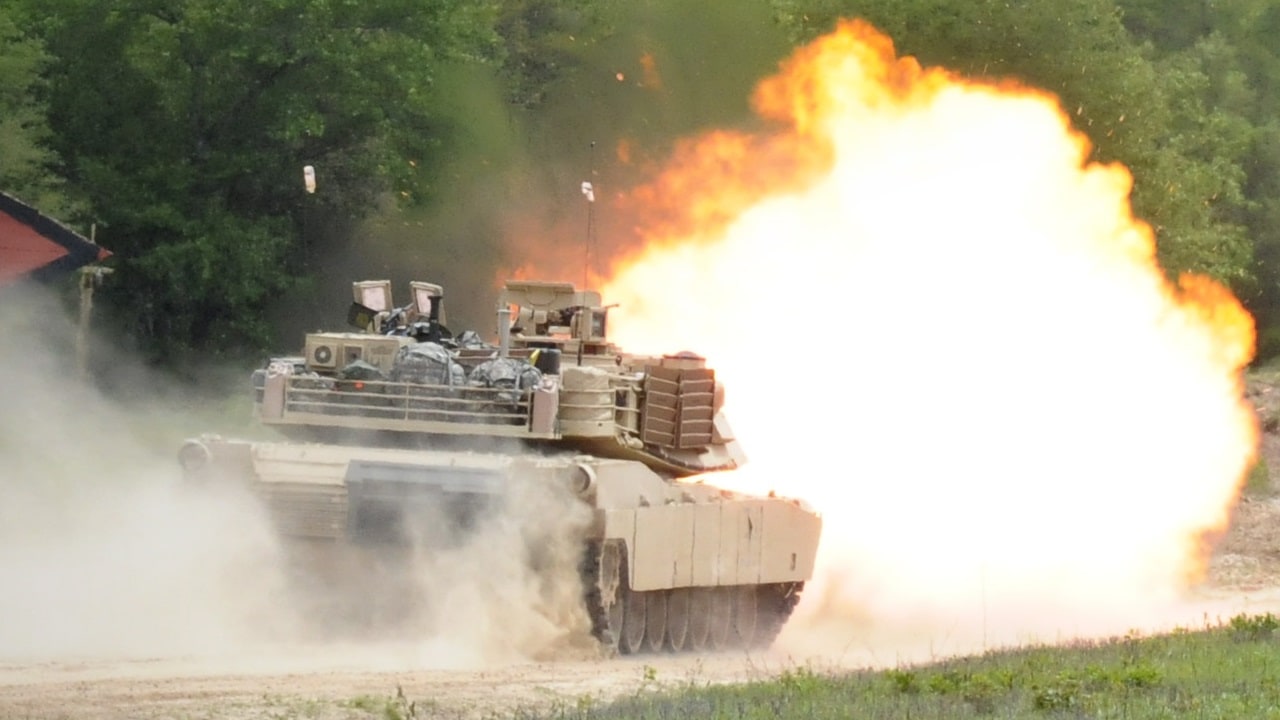Key Points and Summary: The M1 Abrams, long considered one of the world’s best tanks, has faced severe setbacks in Ukraine. Of the 31 delivered, at least 20 have been neutralized, with Russian drones and anti-tank missiles proving highly effective.
-The Abrams’ large size makes it an easy target, while Ukraine’s lack of air and artillery support further limits its effectiveness. Designed for U.S. combined arms warfare, the Abrams is operating outside its intended environment.
-While technologically superior, it has been outmatched by Russian tactics and modern ATGMs. The Abrams isn’t a failure—but in Ukraine, it’s fighting a war it wasn’t built for.
Did the M1 Abrams Fail in Ukraine? A Reality Check
The M1 Abrams represents the peak of American tank manufacturing. With its tough armor, sophisticated electronics, and high mobility, the Abrams has long been considered one of the best tanks in the world for good reasons. However, with its advent in Ukraine, the Abrams’ performance has shown to be lackluster.
This begs the question: is the M1 Abrams an overrated tank, or has it been misused?
Has the Abrams Tank Underperformed?
In January 2023, the U.S. agreed to send 31 M1A1 Abrams tanks to Ukraine. Many thought that American tanks would easily sweep away everything that opposed them, but they were in for quite a shock.
The first Abrams deliveries arrived in Ukraine around September 2023, during which Ukrainian tankers underwent extensive but accelerated training in Western countries.
The Abrams made its combat debut in 2024 during the defense of Avdiivka. Shortly after it was spotted on the front lines, the Russians managed to knock out their first Abrams tank, a feat which reverberated far and wide in Russian propaganda channels.
Soon after, M1 Abrams losses quickly piled up, culminating in Ukraine’s decision to temporarily pull the tank off the battlefield entirely.
To make matters worse, the Russians managed to capture a fully intact Abrams, which was then transported back to Moscow to be studied. This marked the first time a U.S. adversary was able to obtain and study one of these tanks.
As of December 2024, it is estimated that a staggering 20 out of 31 Abrams tanks delivered by the U.S. have been neutralized in one way or another. What went wrong? How did the Abrams, one of the greatest tanks in the West, meet such a fate?
Flaws and Issuses Abound
There are many factors that contributed to Abrams’ subpar performance in Ukraine. First, the Abrams is a large target on the battlefield. Weighing in at a monstrous 63 tons, the Abrams has a menacing and imposing presence on the battlefield, but it is also a very obvious presence.
Ukrainian operators complained that the tank was an easy target on the battlefield for Russian drone operators who easily spot and identify the massive tank. The Ukrainians also pointed out that the Abrams they were given had many technical issues, particularly with the engine and the electronics.
Due to manpower and equipment shortages, Ukrainian Abrams tanks often enter combat by themselves without support from infantry or other Infantry Fighting Vehicles (IFVs). In these disadvantageous conditions, Abrams tanks are easy pickings for Russian anti-tank crews.
The Russians Were Ready
Contrary to popular opinion, the Russians are not stupid. They had spent almost two years learning lessons from their own experiences in tank warfare before the first Abrams reached the front lines. The Russians were also quick to adopt the use of First Person View (FPV) kamikaze drones with explosives strapped to them.
FPV drones continue to be a major problem for both Russia and Ukraine to this day.
Russian anti-tank equipment is also more sophisticated than many people give credit for. Reports indicate that several Abrams tanks were knocked out by Anti-Tank Guided Missiles (ATGMs), most notably the Kornet laser-guided missile, which has been responsible for many M1 Abrams kills.

U.S. Army M1 Abrams Main Battle Tank variation fires at a target at Bucierz Range at Drawsko Pomorskie Training Area, Poland, August 11, 2020. DEFENDER-Europe 20 was designed as a deployment exercise to build strategic readiness in support of the U.S. National Defense Strategy and NATO deterrence objectives. In response to COVID-19, DEFENDER-Europe 20 was modified in size and scope. Phase I of the modified DEFENDER-Europe 20 was linked to exercise Allied Spirit, which took place at Drawsko Pomorskie Training Area, Poland, June 5-19 with approximately 6,000 U.S. and Polish Soldiers. In phase II of the modified DEFENDER-Europe 20, a U.S.-based combined arms battalion will conduct an emergency Deployment Readiness Exercise to Europe July 14-Aug. 22.
These incidents provide a sobering reminder to the West that no tank is safe on the plains of Ukraine.
M1 Abrams: Operating in an Unsuitable Environment
Despite its technological superiority to its Russian counterparts, the Abrams is at a severe disadvantage in Ukraine. The Abrams was designed to work within American combined arms doctrine, which dictates close cooperation between mechanized forces, infantry, artillery, and air power.
Unlike the U.S. Army, the Ukrainians are facing artillery and aircraft shortages, meaning that the Abrams is operating outside its area of expertise.
The U.S. also provided Ukraine with a small number of Abrams tanks. Even if the U.S. had sent 31 M1A2 SEPv4 tanks, that’s still only 31 tanks. In wars of attrition, quantity is as much of a deciding factor as quality is.

M1 Abrams Tank firing. Image Credit: Creative Commons.
If the Abrams is to turn the tide in Ukraine, it needs to be delivered in far larger quantities—a need that the U.S., due to manufacturing constraints and its own strategic needs, cannot realistically meet.
About the Author: Isaac Seitz
Isaac Seitz, a 19FortyFive Defense Columnist, graduated from Patrick Henry College’s Strategic Intelligence and National Security program. He has also studied Russian at Middlebury Language Schools and has worked as an intelligence Analyst in the private sector.

